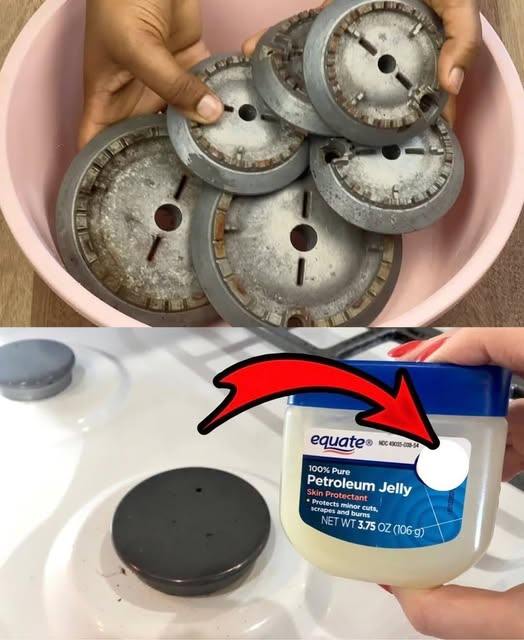ADVERTISEMENT
### **Why Baking Soda and Vinegar Work So Well**
Baking soda is mildly abrasive, making it perfect for scrubbing away grime without scratching surfaces. It’s also a natural deodorizer, which helps eliminate lingering cooking smells. Vinegar, on the other hand, is acidic, and it’s excellent at dissolving grease and mineral deposits, such as water spots or burnt-on food. The combination of baking soda’s abrasiveness and vinegar’s acidic power creates a cleaning solution that tackles even the toughest stains and residues.
### **Step-by-Step Guide to Clean Stoves and Glass-Ceramic Hobs**
#### **Materials Needed:**
– Baking soda
– White vinegar
– Warm water
– Dish soap
– A microfiber cloth or sponge
– A plastic scraper (optional)
– A spray bottle (optional)
#### **1. Prepare the Stove or Hob**
Before applying any cleaning solution, make sure your stove or hob has cooled down completely. For gas stoves, remove the grates and burner caps. For glass-ceramic hobs, ensure that the surface is not hot. This will prevent burns and ensure the cleaning solution can work effectively.
#### **2. Apply Baking Soda**
– Sprinkle a generous amount of **baking soda** directly over the affected areas of your stove or hob. For gas stoves, focus on the burner grates, drip pans, and any other spots where grease and grime have accumulated. For glass-ceramic hobs, apply the baking soda to areas with stains, spills, or grease spots.
– **Tip:** For stubborn stains or burned-on food, you can sprinkle baking soda in a thin, even layer and then add a few drops of water to make a paste. The paste will work effectively on stains and tough grime.
#### **3. Spray with Vinegar**
– Fill a spray bottle with **white vinegar** and lightly spray the vinegar over the baking soda. You should see a fizzy reaction as the vinegar and baking soda interact. This reaction helps lift the grime and grease from the surface.
– If you don’t have a spray bottle, you can also pour a small amount of vinegar onto a microfiber cloth and apply it to the baking soda.
#### **4. Let the Solution Sit**
Allow the baking soda and vinegar to sit on the surface for about **5–10 minutes**. The fizzing reaction will break down the grease, grime, and stains, making it easier to wipe away.
– **For tougher stains**: If the stains are particularly stubborn, you can leave the solution on the surface for a little longer, up to **30 minutes**.
#### **5. Scrub with a Sponge or Microfiber Cloth**
After the solution has had time to sit, take a **sponge** or **microfiber cloth** and gently scrub the surface in a circular motion. The baking soda’s mild abrasiveness will help lift the grime without scratching the surface.
– For gas stoves, use a soft sponge to scrub the burner grates and other parts of the stove. A plastic scraper can be used to gently remove any stubborn burnt-on food.
– For glass-ceramic hobs, use a non-abrasive sponge or cloth to avoid scratching the delicate surface. Be sure to work in gentle circular motions, focusing on areas with visible stains or grease marks.
#### **6. Wipe Down the Surface**
Once the grime has been loosened and scrubbed away, take a clean, damp microfiber cloth and wipe down the surface. Make sure to remove all traces of baking soda and vinegar, as residue can leave streaks.
For Complete Cooking STEPS Please Head On Over To Next Page Or Open button (>) and don’t forget to SHARE with your Facebook friends
ADVERTISEMENT
ADVERTISEMENT
